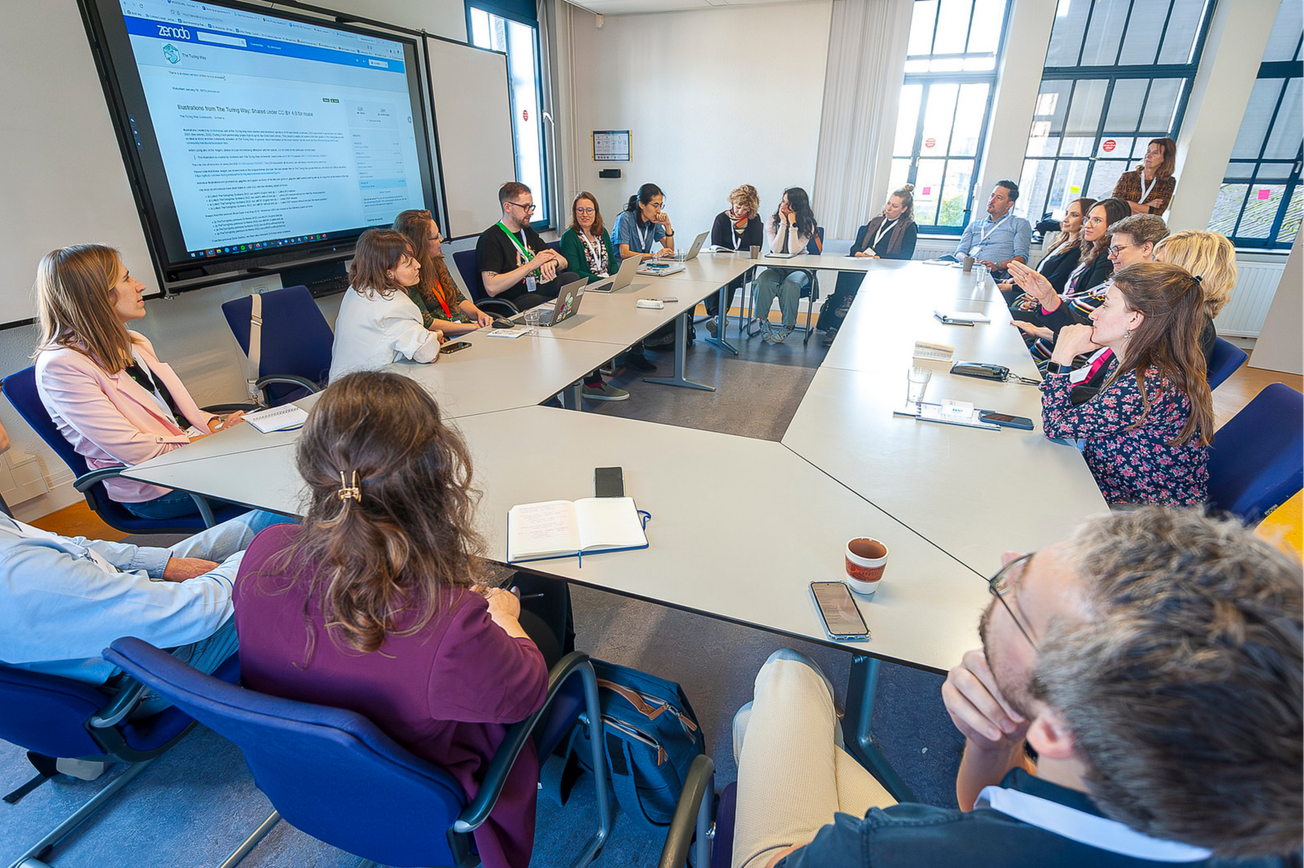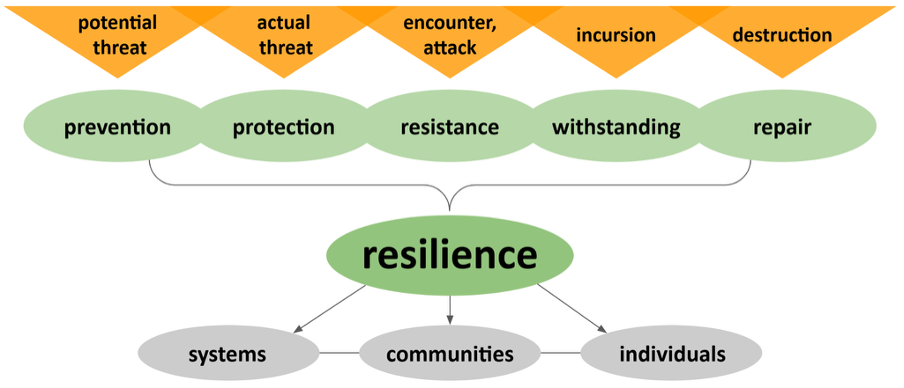I help Canadian neuroscience research institutes create and adopt an institute-level approach to open science. Inevitably, I end up talking to researchers, administrators, academic commercialization offices, and businesses about open science, intellectual property (IP), and technology transfer. I’ve written this blog post to highlight some examples of what is possible outside of the standard approach in the hope that it gets some people thinking about the much broader horizon of technology transfer that could exist.
These conversations can become a little… tense. The fact of the matter is that the value of freedom that is central to open science (i.e. freedom to access, freedom to use, freedom to adapt and remix) is in direct tension with IP. The basic purpose of IP is to take the most important right from standard property law–the right to exclude others from accessing or using something you own–and import it into the world of information.
This type of exclusion is not a natural state of affairs for information. Consider a hammer, which can only be used by one person at a time and will inevitably degrade with continued use. The ability to exclude others from using the hammer is important for its continued usefulness. The information about the hammer–what it’s made of, how to make and assemble the components–on the other hand, can be used by any number of people simultaneously and its usefulness tends to improve over time as more people use and build on it. With this reality in mind, one would think academic institutions, which exist to disseminate high quality information as broadly as possible, would shy away from the IP and embrace open science. So why are they so fascinated with IP?
Why is Academia so Fascinated with IP?
All sorts of useful information comes out of academic research. Not just basic knowledge about the universe but ways of applying that knowledge to create new tools or new ways of doing things. Whether the knowledge is applied to create a new tool or way of doing things, we call the result an “invention.”
In a market society the development and dissemination of inventions is primarily handled by “market actors,” like companies. Universities (at least the non-profit ones) are not supposed to be market actors. They are funded primarily by governments to do things fundamental to the project of humanity that a market usually isn’t interested in, for example provide a well-rounded education and research into the fundamental nature of the universe.
The problem of technology transfer is to take the inventions arising out of the non-market realm of academia and transfer them to the market. For decades the solution has been IP. The logic being that one needs the exclusive guarantee provided by IP before putting in the money needed to develop prototypes, organize manufacturing, obtain regulatory approvals, advertise, handle sales, and disseminate the invention to buyers. Therefore one should turn information into IP (e.g. by obtaining a patent) to obtain the (temporary) right to exclusive use of that information in the market and (at least theoretically) make money.
It is possible that in the past the trade off of encumbering information to transfer it to the market was the only viable option. Maybe in certain circumstances that is still the case. However, the rise of the internet for distributing information, distributed manufacturing technologies, the growth of communities that can work together on problems, and a rising social philosophy advocating for inclusion over exclusion forces us to question whether, in most cases, it is still the best option.
Transferring Technologies
I’ve gone through many cycles of opinion about IP and its place in academia. From praising it as an ideal tool to cursing it as a dam on the flow of information. After much consideration, the conclusion I’ve reached is that the greatest sin of the reliance on IP by the modern model of technology transfer is the rather hum-drum one of narrow mindedness. Concentrating on using IP cuts off so many possibilities.
Using IP to Transfer Technology
Let’s begin with an overview of what the standard “IP to transfer” process looks like, then move onto some examples of how it could work in the open.
Because researchers are a naturally creative bunch it is no surprise that they often come up with new tools, or useful bits of software, or new methods for producing results. It is also unsurprising that upon inventing something they want others to use it. Under the traditional mode of technology transfer here is where the snags start. If you want to turn your invention into a product others can buy you have to:[1]
- Declare it to your institution’s Technology Transfer Office (“TTO”) and wait until they get back to you. This usually takes somewhere on the order of weeks.
- Wait while the office assesses whether it’s the kind of invention worth pursuing (usually involving looking at other existing products or IP and the potential market). This is usually a weeks- or months-long process.
- If they do want to pursue it, then going through the process of writing a patent application.[2] This can easily be a months-long affair. If they don’t want to pursue it, then deciding whether to go through that process yourself.[3]
- Filing the patent application. This can be relatively quick, though the journey between a patent application and a granted patent can be long (averaging almost two years in the USA) and get quite expensive.
- Based on the patent application, looking for money to start a company or licensing the technology to an existing company. There is really no way of putting a good time frame on this. If you already know a potential investor, can self finance, or you are willing to take out a loan and find a bank to give you one, it could be less than a year. If you don’t have any of the above, you could be waiting for years or never succeed.
- Assuming you do start a company or licence the invention, then further development begins. Success in actually creating and selling something relies on finding the right people to hire, avoiding cashflow problems, advertising effectively, obtaining relevant regulatory approval, suing or getting sued by competitors alleging IP infringement, and the panoply of market vagaries that can spell the end.
The above can be a lengthy process, during which time there is no guarantee of success. Moreover, it is best if you don’t tell anyone too much about the invention (unless they sign a Non-Disclosure Agreement) because the more information potential competitors have the more time they have to invent a competing product, challenge your patent application, rush to file a competing patent before you, and myriad other cunning business practices.
Facing all of the above, many give up somewhere along the line. All they wanted was to make and share useful things and going through the rigamarole outlined above is simply too much. If that’s you, or someone you know, I want you to know that there are alternatives.
Transferring Technology in the Open
What most folks don’t know is that there is another option: share the information concerning how to make and use the invention with the potential user community and don’t bother spending the time and money to get IP (in fact, take some simple steps to make sure IP doesn’t get in the way). Then you can use non-IP dependent business models to continue development. Let’s look at a few kinds of invention where this path has proven to be possible.
Hardware and Equipment
When you are making physical tools this approach is known as “open hardware”. There are numerous examples, including the Miniscope,[4] OpenBCI,[5] OpenTrons,[6] the Glia Project,[7] OpenFlexure,[8] and FarmBot.[9]
Open hardware is made possible by technologies of information distribution, like sharing equipment designs and parts-lists via GitHub, and distributed manufacturing, like 3D printing. Using these technologies, inventions can be effectively “transferred” from creator to user at a fraction of the time and cost of the standard approach. Depending on the model, an OpenTrons automatic pipetting machine, for example, can cost approximately $10,000 USD, a fraction of the $50,000 to $100,000 price tag for similar, proprietary competitors.
The open model brings the added benefit of enabling the creation of a community of users who can help in product development. If a user finds a way of improving your product they can inform you of it (e.g., by submitting a new design) and, if you like it, that design can be incorporated. As long as the “no one is taking any IP in any of this” approach is clearly defined through a mission statement, contributor guidelines, and appropriate open-licenses (e.g., CERN Open Hardware License) you can eliminate the headache and delay usually inherent in obtaining and maintaining IP.
Software
TTOs also handle software. Some of the most valuable inventions these days are digital. A piece of software that makes a manufacturing process more efficient or can detect a key disease biomarker can have serious value. What TTOs don’t do is provide any help for doing so on an open basis. The option presented is to wade into the confusing, uncertain, and frustrating world of software patents.
Any piece of useful software released on an open-source basis can, by definition, be downloaded, used, and modified by anyone for free. Contrary to what you might think, the open source software industry is bigger than it ever has been. The success of Red Hat in distributing Linux or Wordpress taking over the blogging world is difficult to deny.
Does it Really Work?
“But if anyone can use it, and you can’t stop them with IP, how do you make money?” There are a variety of answers to this.
In the open hardware case, you can sell kits with all of the necessary parts collected together to make assembly easier, you can sell warranties and support in case something breaks, you can sell fully assembled units to people who don’t have the time, resources, expertise, or inclination to build it themselves, you can sell customization services in case a user needs a slightly altered version, you can sell training courses.
The above is just a small slice of the kinds of “accessory services” that can be sold independent of IP protection.
Similarly for open source software, you can sell customization services, or customer support, or warranties, or training programs, or employ an Open Software as a Service[10] or Infrastructure as a Service[11] business model. The number of viable open-source business models is growing all the time.
How grand would it be for universities to have a pathway for their researchers to design and disseminate open hardware and open source software and, if appropriate, create successful ventures that offer the kinds of accessory services users desire?
Unfortunately, that pathway does not yet exist. The issue is that a supported, open path has not been created by universities (if they even know it exists). It is not that academic institutions are hostile to the idea (usually) but that they continue their narrow-minded concentration on an IP-heavy path that is becoming less and less necessary.
New Paths (and the Need for More of Them)
The analogy I often trot out is that a tomato is open. Every tomato you buy comes loaded with seeds within which reside the entire assembly instructions to manufacture more tomatoes. Yet, instead of people putting tomato growers out of business by growing their own, people return to the store time and again. The fact is, most people do not have the time, resources, expertise, or inclination to grow something when they can buy it. The same is true of many existing and potential products, and the software and hardware examples I’ve discussed here are just the tip of the iceberg.
The open paths sketched above should be available to researchers. It is extremely likely that inventions that don’t fit into the narrow success criteria under the IP-heavy tech transfer approach will be transferred successfully.
There are, unfortunately, some significant barriers. University IP and Innovation Policies usually have absolutely nothing to say about open pathways, and in some cases are actively harmful to those who want to try them. I have found it consistently impossible to get a straight answer from TTOs about whether the university will try to make a claim to a portion of revenue if a researcher tries to use one of these models.The reason, I believe, isn’t that they want to be difficult but because under current policies there is no clear answer. These policies are in desperate need of being updated. Further, TTOs lack the expertise and relationships necessary to take advantage of open transfer pathways. I would bet a healthy sum that any 10 TTOs chosen at random would not be able to offer much useful advice when it comes to selecting a distribution platform, choosing an open license, or cultivating a user community. Those topics simply don’t apply within the narrow lane they’ve set for themselves.
One thing that gives me hope is that if you look at the website of most TTOs and navigate to their mission statement you likely won’t find anything about patents or other forms of IP. What you will find is that they exist to help make sure that inventions are transferred out into the world in a way that produces economic and social good. I think that is what we all want. So, when I meet with technology transfer officers, entrepreneurial researchers, or institutional leadership that is where I start. My job then is simply to convince them that establishing open paths should be added to their toolkit. Doing so can often be quite fun! Hopefully this post helps at least some of you do the same.
This is all assuming the standard model at play in North America, though many European colleagues I’ve talked to operate under similar regimes. ↩︎
To be fair, I am simplifying here. Institutions can and often do decide to file something called a provisional patent, which takes less time. Provisional patents, however, are essentially short-term placeholders that won’t provide full patent protection unless converted into a proper patent application. It all gets a bit hairy and into the IP weeds, hence my attempt to spare you through the simplification. ↩︎
Which means you also have to pay for it yourself which, given the fees of IP professionals, can be quite expensive (think at least $3000 just to write and file, often much, much more). That doesn’t include the costs of shepherding the patent through the review and revision process (what’s known somewhat confusingly as patent prosecution) which often adds many more thousands or tens of thousands of dollars. ↩︎
A microscope for fluorescence imaging. ↩︎
Electroencephalography devices. ↩︎
Automated pipetting machines. ↩︎
Medical equipment like tourniquets and stethoscopes. ↩︎
A microscope. ↩︎
A robotic farming system. ↩︎
This is how Wordpress works. ↩︎
Copyright © 2023 Dylan Roskams-Edris. Distributed under the terms of the Creative Commons Attribution 4.0 License.








